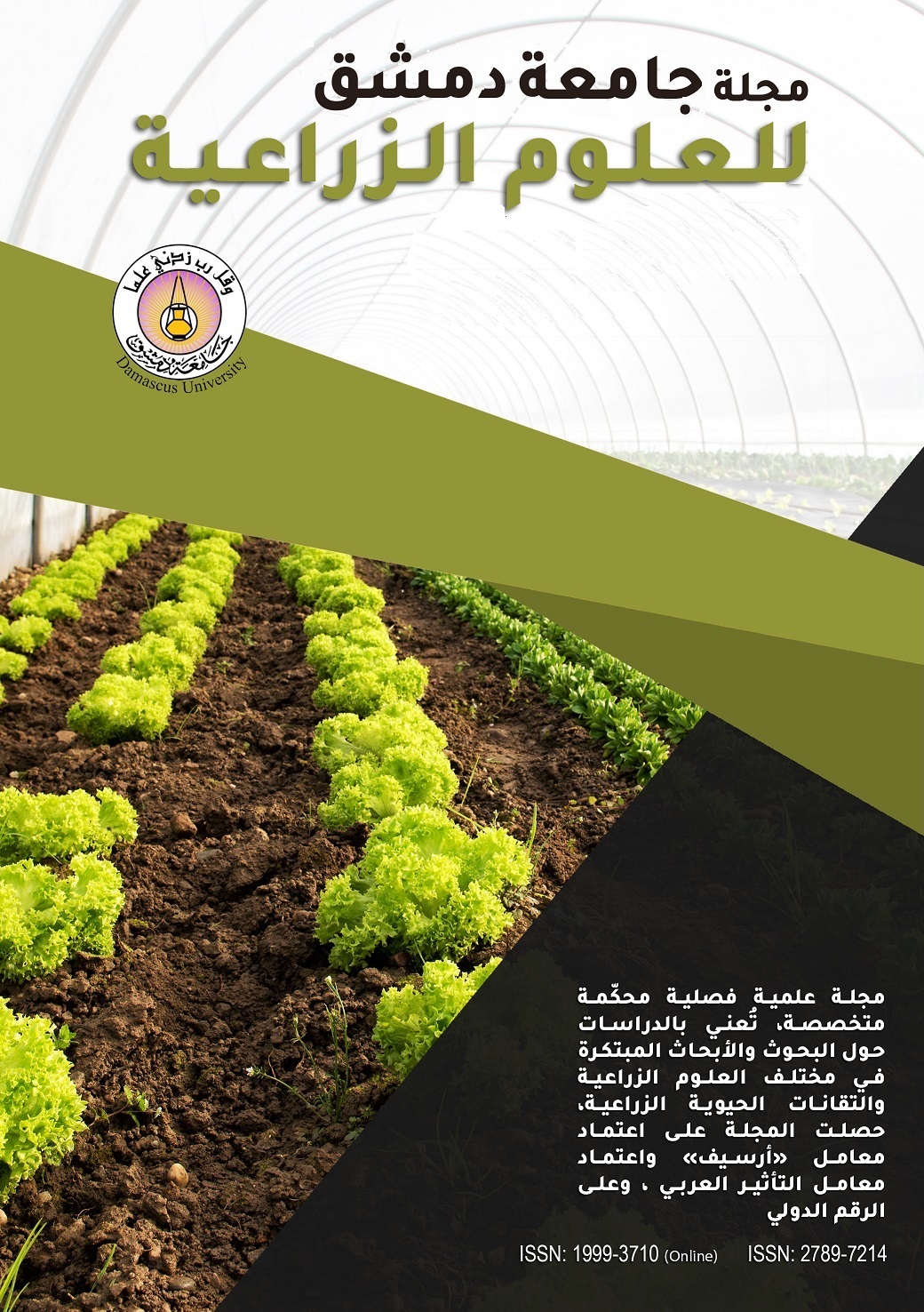The effect of fortifying the yogurt with iron on its chemical and sensual properties
Keywords:
yogurt, fortification, ferrous gluconate, FeCN, chemical properties, peroxide number, lactic acid bacteriaAbstract
This research was conducted in the Department of Food Sciences / Faculty of Agriculture / Damascus University in the year 2019-2020 AD, two types of iron forms were used at three concentrations (11,18,26 mg / kg) for each type: ferrous gluconate and an iron-casein complex to fortify milk Yoghurt, and then study the physical and chemical characteristics of fresh processed milk, after storing it for 14 days at a temperature of 4 ° C. The results showed that there were no significant differences in the fresh product in terms of the percentage of solid matter, fat and ash, the separation of serum, acidity and the count of Lactic acid bacteria in the samples fortified with all concentrations compared to the control, while the increase in iron concentration led to an increase in both the peroxide number and the iron concentration in the final product. After storage, it increased. The separation of the serum, the acidity and the count of Lactic acid bacteria decreased, and both the peroxide number and the concentration of iron in the final product increased in all samples compared to the control. The samples fortified with ferrous gluconate (11 mg / kg) were superior to having the lowest peroxide number compared to the rest of the samples fortified
with all concentrations. Through the Sensory evaluation of the fortified samples, it was observed that the fortification did not affect sensory properties in the fresh product, while the effect appeared at the end of the storage period, and all samples were sensory acceptable.

